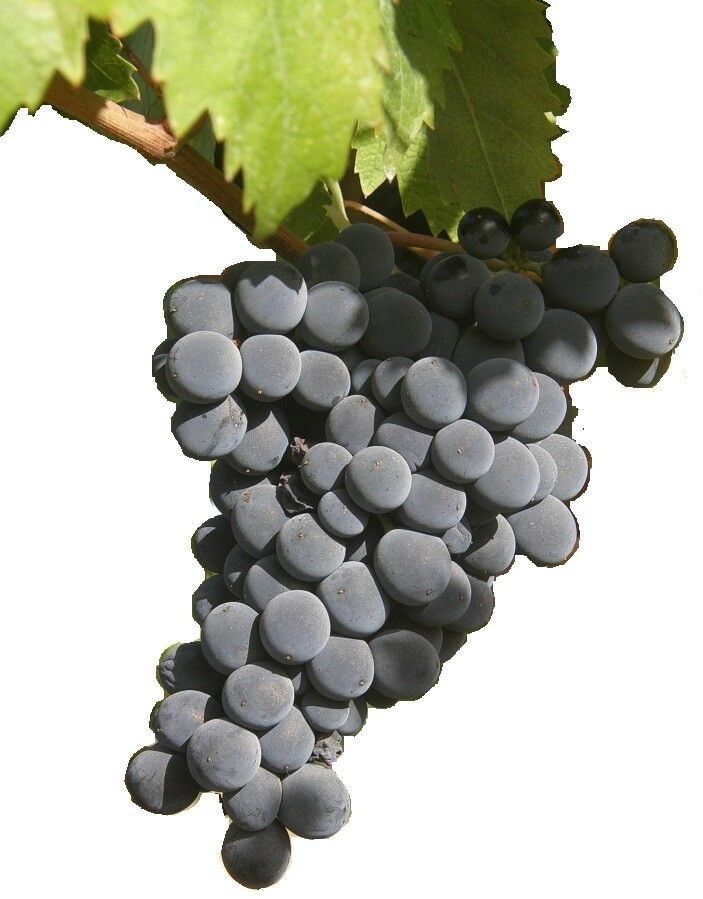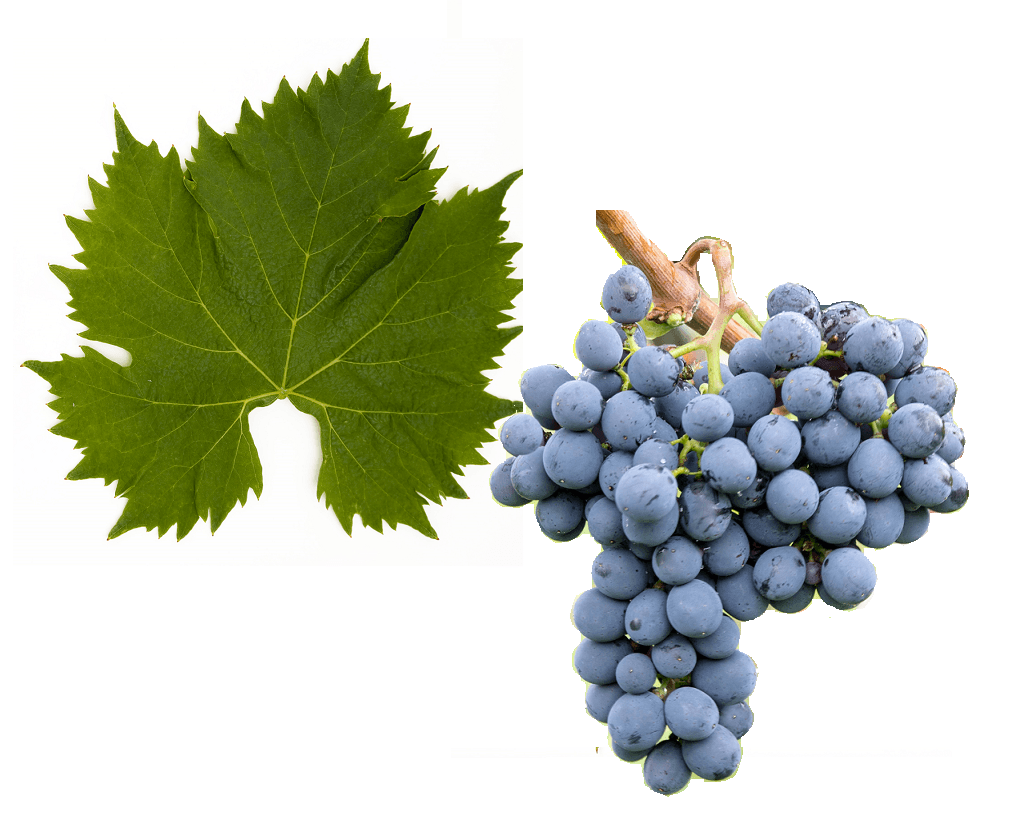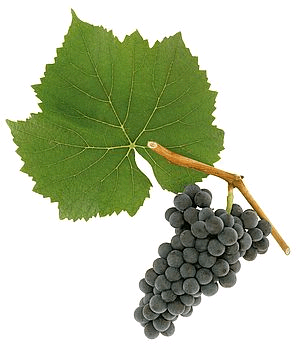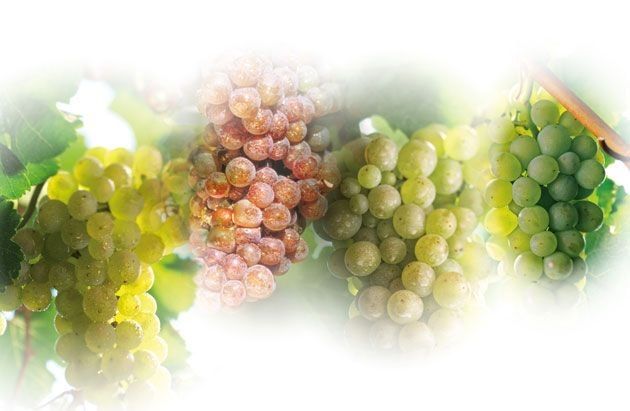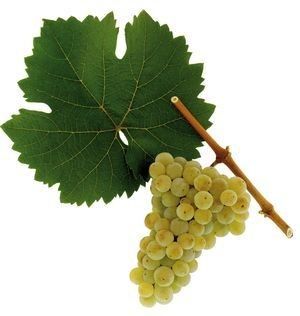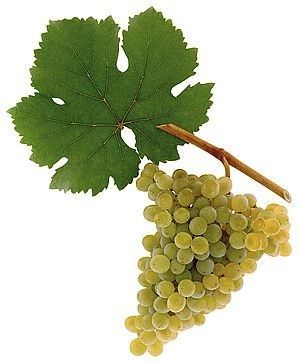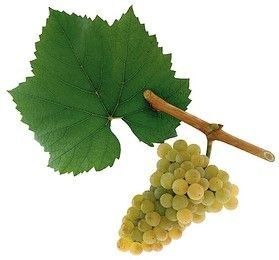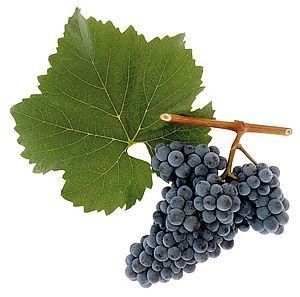our wine varietals
Montepulciano d´Abruzzo
Cultivation
This wine is produced in the four provinces of L'Aquila, Teramo, Chieti, and Pescara in the Abruzzo region (Italian: Abruzzo). The vineyards are located at an altitude below 500 m. Only in exceptionally favorable southern locations are vineyards permitted at altitudes up to 600 m.
The provinces of the Abruzzo region
in the province of Chieti
Altino, Archi, Ari, Arielli, Atessa, Bomba, Bucchianico, Canosa Sannita, Casacanditella, Casalanguida, Casalincontrada, Carpineto Sinello, Casalbordino, Casoli, Castel Frentano, Celenza sul Trigno, Chieti, Crecchio, Cupello, Fara Filiorum Petri, Filetto, Fossacesia, Francavilla al Mare, Fresagrandinaria, Frisa, Furci, Gissi, Giuliano Teatino, Guardiagrele, Lanciano, Lentella, Miglianico, Monteodorisio, Mozzagrogna, Orsogna, Ortona, Paglieta, Palmoli, Perano, Poggiofiorito, Pollutri, Ripa Teatina, Roccamontepiano, Rocca San Giovanni, San Buono, Sant'Eusanio del Sangro, San Giovanni Teatino, Santa Maria Imbaro, San Martino sulla Marrucina, San Salvo, San Vito Chietino, Scerni, Tollo, Torino di Sangro, Torrevecchia Teatina, Treglio, Vasto, Villalfonsina, Villamagna, Vacri;
in the province of L'Aquila
Acciano, Anversa degli Abruzzi, Balsorano, Bugnara, Canistro, Capestrano, Castel di Ieri, Castelvecchio Subequo, Civita d'Antino, Civitella Roveto, Cocullo, Corfinio, Fagnano Alto, Fontecchio, Fossa, Gagliano Aterno, Goriano Sicoli, Introdacqua, Molina Aterno, Morino, Ofena, Pacentro, Poggio Picenze, Pratola Peligna, Pettorano sul Gizio, Prezza, Raiano, Roccacasale, San Demetrio ne' Vestini, Sant'Eusanio Forconese, San Vincenzo Valle Roveto, Secinaro, Sulmona, Tione degli Abruzzi, Villa Sant'Angelo, Villa Santa Lucia degli Abruzzi, Vittorito.
in the province of Pescara
Alanno, Bolognano, Brittoli, Bussi sul Tirino, Cappelle sul Tavo, Castiglione a Casauria, Catignano, Cepagatti, Città Sant'Angelo, Civitella Casanova, Civitaquana, Collecorvino, Corvara, Cugnoli, Elice, Farindola, Lettomanoppello, Loreto Aprutino, Manoppello, Montebello di Bertona, Montesilvano, Moscufo, Nocciano, Penne, Pianella, Pietranico, Picciano, Pescara, Pescosansonesco, Popoli, Rosciano, San Valentino in Abruzzo Citeriore, Scafa, Serramonacesca, Spoltore, Tocco da Casauria, Torre de’ Passeri, Turrivalignani, Vicoli;
in the province of Teramo
Alba Adriatica, Ancarano, Atri, Basciano, Bellante, Bisenti, Campli, Canzano, Castel Castagna, Castellalto, Castiglione Messer Raimondo, Castilenti, Cellino Attanasio, Cermignano, Civitella del Tronto, Colledara, Colonnella, Controguerra, Corropoli, Giulianova, Martinsicuro, Montefino, Montorio al Vomano, Morro d'Oro, Mosciano Sant'Angelo, Nereto, Notaresco, Penna Sant'Andrea, Pineto, Roseto degli Abruzzi, Sant'Egidio alla Vibrata, Sant'Omero, Silvi, Teramo, Torano Nuovo, Tortoreto, Tossicia and in the Trignano district of the municipality of Isola del Gran Sasso d'Italia.
Production
Montepulciano d'Abruzzo DOC must be composed of at least 85% Montepulciano grapes. A maximum of 15% of other red grape varieties permitted for cultivation in the Abruzzo region may be added, either individually or together. If the wine carries the "Riserva" designation, it must have been aged for at least two years, including at least nine months in wooden barrels, within the production area defined within the region.
Description
Color
Intense ruby red with light violet reflections, tending to garnet red with age.
Aroma
Aromas of red fruits, spices, intense, ethereal.
Taste
Full, dry, harmonious, tannic.
Other
Montepulciano d'Abruzzo is not the same as Vino Nobile di Montepulciano.
Sangiovese
Origin
For a long time, the classification was based on Sangiovese Grosso (with representatives Brunello, Prugnolo Gentile, and Sangiovese di Lamole) and Sangiovese Piccolo (Sangiovese Piccolo di Montalcino, Morellino di Scansano). This rough classification was based, as the names suggest, on the size of the berries. However, as early as 1879, an ampelographic commission of the province of Siena established the varietal identity. Recent planting trials with various clones have traced the supposed characteristic of Sangiovese Grosso's larger berries to the growing conditions around Montalcino. Prugnolo Gentile, from which Vino Nobile di Montepulciano is made, and Brunello, the namesake of the wine of the same name from Montalcino, are no longer listed as separate varieties. In both cases, the DOCG regulations refer to Sangiovese, which is called Brunello or Prugnolo gentile in the respective regions.
Although there is a recurring suspicion that precursors to Sangiovese were already cultivated in Roman or even Etruscan times, these hypotheses cannot be substantiated. Since the grape variety has always had very different names depending on the region and, moreover, exhibits strong ampelographic differentiation depending on the growing conditions, it is hardly possible today to clearly identify which grape variety was given which name and when. The origin of the name 'Sangiovese' is not entirely clear, but it is often derived from sanguis jovis (Latin) and translated as "blood of Jupiter."
Distribution
The main growing areas for Sangiovese are the traditional settlement areas of the Etruscans, especially the Tuscan region. However, it is also significantly represented in Emilia-Romagna and the Marche. Some of Tuscany's most famous red wines are based on Sangiovese, according to the production regulations.
Sangiovese is considered one of Italy's most important leading varieties and is also grown in most other Italian regions, albeit in small quantities and with the use of a blending partner. The grape has achieved a certain importance on the island of Corsica. The Genoese, who ruled the island until the end of the 18th century, introduced the grape variety from Italy. It is permitted there under the name Nielluccio in all AOC / Vin de Pays red and rosé wines. Other, mostly smaller, Sangiovese plantations can be found in Europe in Greece, Malta, Switzerland, Turkey, and Hungary. Outside Europe, it is grown in Argentina, Australia, Brazil, Chile, Israel, Canada, New Zealand, South Africa, Thailand, Tunisia, and the USA.
Sapling tip
Heavily woolly, whitish green with a reddish tinge.
Leaf
Young leaves are light green, slightly bronzed; Leaves are medium-sized, five-lobed, dark green, smooth on the upper side, slightly bristled, heavily bristled underneath; stalk is U-shaped and open.
Grape
Medium-sized, cylindrical to slightly pyramidal, shouldered, compact.
Berries
Medium-sized, round, thick-skinned, blackish-blue in color.
Ripening
Early October
Characteristics
The vine is very vigorous, prefers light, calcareous soils and good locations, produces high yields, and ripens in early October. The variety is high-yielding
Synonyms
Agnelluccia, Agnellucciu, Brunelletto, Brunello, Brunello di Montalcino, Brunello Montalcino, Cacchiano, Calabrese, Cardisco, Cassano, Chiantino, Cordisio, Corinto, Corinto Nero, Cuocignola, Gabba Cani, Guarnacciola, Ingannacane, Lacrima, Lambrusco, Lambrusco Mendoza, Liliano, Maglioppa, Montepulciano Cardisco, Montepulciano Primutico, Morellino, Morellino de Florence, Morellino di Scansano, Morellone, Moscatale, Moscatele, Negrello, Negretta, Nelutcho, Nerello, Nerello Campotu, Nerino, Nerino Sanvicetro, Niella, Niellone, Nielluccia, Nielluccio, Niellucciu, Pigniuolo Rosso, Pignolo, Pignolo Rosso, Pignuolo, Plant Romain, Primaticcio, Prugnolino Dolce, Prugnolo, Prugnolo di Montepulciano, Prugnolo Dolce, Prugnolo Gentile, Prugnolo Gentile di Montepulciano, Prugnolo Rosso, Puttanella, San Giovese dal Cannello Lungo di Predoppio, San Giovese di Romagna, San Gioveto, San Gioveto Dolce Nero, San Gioveto Gentile, San Gioveto Grosso, San Giovetto Grosso di Toscana, San Montanino, San Quioveto, San Roveto, San Zoveto, Sancivetro, Sangineto, Sangiogheto, Sangiovese Crni, Sangiovese dal Cannello Lungo, Sangiovese dal Cannello Lungo di Predappio, Sangiovese di Lamole, Sangiovese di Romagna, Sangiovese Dolce, Sangiovese Elba, Sangiovese Gentile, Sangiovese Grosso, Sangiovese Nostrano, Sangiovese Piccolo, Sangiovese Piccolo Precoce, Sangiovese Romagnolo, Sangiovese Toscano, Sangiovete, Sangioveto, Sangioveto Chiantigiano, Sangioveto dell'Elba, Sangioveto Dolce, Sangioveto Doppio, Sangioveto Doppio del Chianti, Sangioveto Grosso, Sangioveto Montanino, Sanvicetro dal Cannello Lungo di Predappio, Sanvicetro di Lamole, Sanvicetro di Romagna, Sanvicetro Dolc
Pinot Noir
Origin
France, Burgundy
Ancestry
Natural cross between Pinot Noir and Traminer
This is a very old variety that may have existed for 2,000 years. The area between Lake Geneva (Switzerland) and the Rhône Valley (France) is thought to be the home of the Pinot Noir varieties. In the Swiss canton of Valais, Pinot Noir is considered a traditional grape variety. The origin of Pinot Noir is still unclear and is the subject of mixed scientific debate.
The French term "Pinot" probably derives from the elongated shape of Pinot Noir grapes, which are quite similar to a pine cone (French: "pin"). The term "Burgunder" commonly used in German-speaking countries is not a translation of the French name, but rather a regional designation.
Distribution
Pinot Noir has spread worldwide from Burgundy and is also present in almost all Austrian wine-growing regions.
Leaf
Pentagonal, three to five lobes, stalk sinus slightly overlapping
Grape
Small clusters, densely packed, cylindrical, small, round berries with blue-black, thin skins
Ripening time
Medium to late
Demands
Pinot Noir can produce high-quality, age-worthy wines in ideal locations, with high ripeness and skillful vinification, even if this sensitive variety presents a challenge for the winemaker in the vineyard and cellar. Its characteristic color is rather light. The typical aroma is subtle, with an aroma spectrum ranging from red berry fruits (strawberry, raspberry, sour cherry) and forest floor to prunes.
Pinot Noir is an important red wine variety considered to be of high quality. It has achieved worldwide distribution and importance. The wine is sometimes referred to as the king of red wines. It is a classic quality red wine variety from cooler wine-growing regions such as Burgundy. Pinot Noir is also an important blending partner for champagne production.
Synonyms
Aprofekete, Arbst, Arbst Blau, Arbst Blauer, Assmannshausen, Augustiner, Auvergnat, Auvernas, Auvernas Rouge, Auvernat, Auvernat Noir, Berligout, Black Burgundy, Black Morillon, Black Burgundy, Blauer, Blauer Arbst, Blauer Augustiner, Blauer Burgundy, Blauer Claevner, Blauer Clevner, Blauer Klaevener, Blauer Klaever, Blauer Klevner, Blauer Klewner, Blauer Nuremberg, Blauer Nuremberg, Blauer Rischling, Blauer Seeklevner, Blauer Spätburgunder, Blauer Sylvaner, Blauer Statburgunder, Bodenseetraube, Bohemian, Bon Plant, Borgogna Nera, Borgogna Rosso, Bourgignon, Bourgignon Noir, Bourgoignon Noir, Bourguignon, Bourguignon Gros, Bourguignon Black, Bourguignon Petit, Bruenlaeubler, Burgundy, Burgundy Cernii, Burgundy Crni, Burgundy Crni Pozni, Burgundy, Burgundy Blue, Burgundy Blue, Burgundy Large Blue, Burgundy Little Blue, Burgundy Red, Burgundy Black, Burgundy Crni, Burgundy Cake Apro, Burgundy Cake Aproszemue, Burgundy Mic, Burgundy Modern, Cerna, Cerna Orugla, Cerna Orugta Banka, Cerna Ranka, Chambertin, Champagne, Cherna, Chiavenase, Chiavenna, Chpatchok, Claevner, Claevner Blue, Claevner Black, Clavensis, Clevner, Clevner Mariafeld, Coraillod, Cortaillod, Derice Auvernas Noir, Dickblau, Real Black Blue Klevner, Alsace Red, Alsace Red, Fin Noir, Fin Noir de Toulon, Fin Plant Dore, Formentin Noir, Franconian Black, Franc Noiren, Franc Noirien, Franc Pineau, Franc Pinot, Francois Noir, Fresh Black, Early Blue, Early Blue, Early Black, Early Blue, Gamais, Genetin de St. Menin, Gentil Noir, Glaevinger, Glass Black, Pinot Gris, Gribalet Noir, Coarse Sweet Black, Great Burgundy, Great Early Black, Great Burgundy, Good Blue, Good Blue, Hohmann 28/95/46/4+5, Jakabszoeloe, Karapino, Kek Burgundi, Kek Kisburgundi, Kek Klevner, Kek Rulandi, Kis Burgundi, Kis Burgundikek, Kisburgundi, Kisburgundi Kek, Klaevner, Klaevner Black, Klebrot, Klebroth, Klebrott, Little Burgundy, Little Burgundy, Kleinrot, Kleinroth, Klevinger, Klevner, Klevner Kek, Klevner Schwarzblau, Kocinka, Korai Kekburgundi, Langedet, Maehrchen, Malterdinger, Maltertinger, Marillon N, Mario Feld, Massoutel, Massoutet, Maurillon, Mensois, Modra Burgunda, Modra Klevanja, Modra Klevanjka, Modra Klevanyka, Modri Pinot, Moehrchen, Moehrchen Blaues, Moehrlein, Mohrenkoenigin, Moor Queen Fruehblaue, Mor Burgunder, Moreote, Moreote Noir, Moreotic Grape, Morillon, Morillon Noir, Mourillon, Nagyburgundi, Nere, Neyran, Neyron Petit, Noble, Noble Joue, Noir de Franconier, Noir de Versitch, Noir Menu, Noirien, Noirien Franc, Noirien Ternent, Noirin, Noirun, Okrugla Ranka, Ordinaerer Blauer, Ordinaerer Rother, Orleanais, Orleans, Petit Noir, Petit Noirin, Petit Plant Dore, Petit Verot, Pignol, Pignola, Pignolet, Pignolo, Pignolus, Pignuola, Pimbart, Pineau, Pineau de Bourgogne, Pineau de Bourgoyne, Pineau de Chambertin, Pineau de Gevrey, Pineau Franc, Pineau Noir, Pino Black, Pino Ceren, Pino Cernii, Pino
Wiener gemischter Satz
Gemischter Satz is the name given to wine made from different grape varieties from a single vineyard.
This typical Viennese wine has been cultivated for centuries in Vienna's vineyards, which contain up to 20 different grape varieties. Unlike a cuvée, several grape varieties are cultivated together and, after harvesting, pressed and fermented together to produce grape must. The original intention was to minimize risk and ensure consistent wine quality by utilizing the different ripeness and acidity levels of the grape varieties. Today, Gemischter Satz has become established, particularly in the Austrian wine-growing region of Vienna and Styria (there under the name Mischsatz), and is considered a specialty. It fits perfectly with the demands of the Slow Food movement, as it already contains enormous biodiversity.
Riesling
Synonym:
Beregi Riesling, Beyaz Riesling, Biela Disuca Grasiva, Biela Grasevina, Bukettriesling, Dinca Grasiva Biela, Edelriesling, Edle Gewuerztraube, Feher Rajnai, Gentil Aromatique, Gentile Aromatique, Gentile Aromatique Petracine, German Riesling, Gewuerzriesling, Gewuerztraube, Graefenberger, Graschevina, Grasevina Rajnska, Grauer Riesling, Grobriesling, Hochheimer, Johanisberger, Johannisberg, Johannisberg Riesling, Johannisberger, Johannisberger Gontil Aromatique, Johannisberger Weisser, Johannisberger White, Jonanisberger Riesling, Karbacher, Karbacher Riesling, Kastellberger, Kis Rizling, Kleigelberger, Kleiner Riesling, Kleinriesler, Kleinriesling, Klingelberger, Klingenberger, Klingerberger, Krauses, Krausses Roessling, Lipka, Moselriesling, Nieberlander, Niederlaender, Oberkircher, Oberlaender, Petit Rhin, Petit Riesling, Petracine, Pfaelzer, Pfefferl, Piros Rajnai Rizling, Pussilla, Raisin Du Rhin, Rajinski Rizling, Rajnai Rizlin, Rajnai Rizling, Rajnai Rizling Gm 239-20, Rajnski Rizling, Rajnski Ruzling, Rano, Reichsriesling, Reissler, Remo, Rendu, Reno, Renski Rizling, Rey Rislinqi, Reyn Rislinqi, Reyn's Risling, Reynai, Rezlik, Rezlin, Rezling, Rezlink, Rhein Riesling, Rheingauer, Rheingauer Rieling, Rheinriesling, Rheinriesling GM 239-20, Rheinrisling, Rhiesling, Rhine Riesling, Riesler, Riesling, Riesling Bianco, Riesling Blanc, Riesling De Rhin, Riesling Echter Weisser, Riesling Edler, Riesling Gelb Mosel E 43, Riesling Giallo, Riesling Grau, Riesling Grosso, Riesling Gruener Mosel, Riesling Mosel, Riesling Reinskii, Riesling Renano, Riesling Renano Bianco, Riesling Rhenan, Riesling Rhine, Riesling Rothstieliger, Riesling Weisser, Riesling White, Rieslinger, Rieslingtraube, Rislinenok, Risling, Risling Reinskii, Risling Rejnski, Rislinock, Rislinok, Rislinq, Rizling Linner, Rizling Rajinski, Rizling Rajnai, Rizling Rajnski, Rizling Rajnski Bijeli, Rizling Rejnskij, Rizling Rynsky, Roesling, Roessiling, Roessling, Rohac, Rossling, Rosslinger, Ruessel, Ruessiling, Ruessling, Russel, Ryn-Riesling, Rynsky Ryzlink, Ryzlink Rynsky, Starosvetske, Starovetski, Szuerke Rizling, Uva Pussila, Weiser Riesler, Weisser Kleiner Riesling, Weisser Riesling, White Riesling.
Origin:
Germany, Upper Rhine. The variety was first mentioned in Rüsselsheim in 1435.
Ancestry:
A natural cross between White Heunisch, Vitis sylvestris, and Traminer. The variety was probably selected from wild vine stocks on the Upper Rhine. Red Riesling is a red-grape variety, a bud mutation of White Riesling. White Riesling is not related to Welschriesling. The variety was brought from the Rhine to Austria on the Danube and is now, alongside Grüner Veltliner, the most important white wine variety in the Wachau region. In prime locations—especially in the Wachau, Kremstal, Traisental, and Kamptal wine-growing regions, but also Vienna, Wagram, and Weinviertel—Riesling achieves maximum ripeness through very late harvests.
Demands:
Riesling, as a world-renowned variety, is, alongside Grüner Veltliner, of great importance and fame in the wine-growing regions along the Danube and its tributaries, with their weathered primary rock soils. It is not for nothing that the wine is called the king of white wines. This late-ripening variety has very high demands on the vineyard location and is susceptible to stalk rot, stem blight, and berry botrytis. Botrytis infestation of the grapes is undesirable (except for noble rot in Auslese wines), as it destroys the varietal aromas.
Wine Character:
Young Riesling wines exhibit charming fruitiness and spiciness, and can develop into great, complex wines with maturity. These wines are dominated by stone fruit aromas of peach, apricot, and exotic fruits. The terroir of the Wachau, Kremstal, Kamptal, and Traisental, in particular, characterizes the wines with a mineral note reminiscent of slate or flint. Riesling matures slowly and delivers the highest quality as an old wine with rose-like aromas. Depending on the degree of ripeness, a pleasant petrol tone develops, which is not desired by all consumers. Late-onset noble rot infestation of the grapes produces Auslese and Beerenauslese wines of outstanding quality.
Leaf:
Medium-sized, circular, five-lobed, with a coarse leaf surface, heavily hairy underside with a scar point. The petiole groove is closed or overlapped. The leaf is blunt and medium-sized with teeth.
Grape:
The cylindrical cluster is small and densely packed with berries. The stalks are short and relatively woody. The round berries are small and yellow-green in color. With sufficient sunlight and ripeness, the color changes to yellow-brown, and the berries are then spotted with black. The skin of the berries is thick. The aroma of the berries is delicate and has a slightly aromatic bouquet.
Growth: Vigorous
Ripening time: Late
Grüner Veltliner
Synonyms:
Weißgipfler, Grünmuskateller (AT), Veltlínské Zelené (CZ), Zöld Veltelini (HU), Veltlínske Zelené (SK), Zeleni Veltlinec (SL), Bielospicak, Cima Biancam, Dreimänner, Feherhegyü, Feldlinger, Green Veltliner, Greener (in English), Grüner Muskateller, Grüner Manhardsrebe, Grüner, Grüner Muskateler, Grüner Muskateller (used until the 1930s), Grüner Velteliner, Grüner Weißgipfler, Grünmuskateller, Manhardsrebe, Manhardtraube, Manhartsrebe, Mauhardsrebe, Mouhardrebe, Mouhardrebe, Muskatel, Muskatel Zeleny, Nemes Veltelini, Plinia Austriaca, Ranfol Bianco, Ranfol Bijeli, Ranfol Weißer, Rdeci Veltinec, Reifler White, Ryvola Bila, Tarant Bily, Valtelin Blanc, Valtelina Vert, Valteliner, Valteliner Blanc, Valteliner Vert, Velteliner Grüner, Velteliner Vert, Velteliner Weißer, Veltelini Zöld, Veltlin Zeleny, Veltlinac Zeleni, Veltlinec, Veltliner, Veltliner Blanc, Veltliner Grun, Veltliner Gruner, Veltliner Grün, Veltliner Verde, Veltlini, Veltlinské zelené (CZ), Veltlinske zelené (SK), Veltlinski Zelenii, Veltlinsky Vert, Veltlinsky Zeleny, Vetlinac, Vetlinac Zeleni, Weißer Raifler, Weißer Reifler, Weißer Valteliner, Weißer Velteliner, Weißgipfler Grüner, Yesil Veltliner, Zeleni Vetlinac, Zeleny Muskatel, Zeleni veltlinec (Slovakia), Zleni Veltinac, Zöld Muskotaly, Zöld Muskotalynak, Zöld veltelini (Hungary), Zöld Velteliny, Zöldveltelini, and Zold Veltelini.
Info:
By far the most important white wine variety in Austria is Grüner Veltliner, which likely originates from a Traminer cross. A centuries-old vine found in St. Georgen in Burgenland indicates the second parent variety. This national variety is most widespread in the Weinviertel region of Lower Austria, where it plays a special role as a typical Weinviertel DAC wine. Veltliner also enjoys DAC status in the Traisental, Kremstal, Kamptal, and the Leithaberg region of Burgenland. Other classic regions include the Wachau and Wagram. However, Veltliner vineyards can also be found in all other regions of Lower Austria, northern Burgenland, and Vienna.
The most widely cultivated grape in Austria, especially Lower Austria, is rarely cultivated outside its homeland, except in a few smaller Central European regions, such as the Czech Republic, Slovakia, and Hungary. It thrives particularly well on loess soils such as the northern Weinviertel, where the vine finds optimal soil and climate conditions, as well as in the Wachau, Kamptal, Kremstal, and Wagram. The spectrum is broad: from light, sparkling wines that are usually drunk young to powerful, full-bodied wines with great aging potential. A common feature is the stimulating, piquant mix of fruit (usually apple) and spice (the characteristic "Pfefferl" flavor), complemented by harmonious acidity. Nutty and dried fruit, exotic notes, and honey aromas indicate great ripeness, as in Smaragd wines from the Wachau and reserves from the DAC regions or the Wagram.
Leaf:
Rolled over, main veins green or with red stem base, petiole sinus somewhat pentagonal to circular, five to seven lobes, flat profile, often overlapping outwards, with a V-shaped base, underside moderately hairy
Cluster:
Medium-sized, medium-dense, conical, with one to three wings, secondary raceme absent or rudimentary
Berry:
Rounded, oval, light weight, greenish-yellow skin, uncolored flesh
Burnout:
Medium to late
Flowering:
Medium
Ripening time:
Medium
Chardonnay
Synonym:
Arboisier, Arnaison Blanc, Arnoison, Aubain, Aubaine, Auvergnat Blanc, Auvernas, Auvernas Blanc, Auvernat, Auvernat Blanc, Auxeras, Auxerras Blanc, Auxerrois, Auxerrois Blanc, Auxois, Auxois Blanc, Bargeois Blanc, Beaunois, Biela Klevanjika, Blanc De Champagne, Blanc De Cramant, Breisgauer, Breisgauer Süssling, Breisgauer Sussling, Burgundy Weisser, Burgundi Feher, Chablis, Chardenai, Chardenay, Chardenet, Chardennet, Chardonay, Chardoney, Chardonnay, Chardonnay Bijeli, Chardonnet, Chatenait, Chatey Petit, Chatte, Chaudenay, Chaudenet, Chaudent, Clävner, Clevner, Cravner, a'Arnoison, D'Auvernat Blanc, D'Epintte, Epinette, Epinette Blanc, Epinette Blanche, Epinette De Champagne, Ericey Blanc, Feher Chardonnay, Feherburgundi, Feinburgunder, Gamay Blanc, Gelber Weissburgunder, Gentil Blanc, Grosse Bourgogne, Klawner, Klevanjka Biela, Klevner, Klingelberger Grosser, Lisant, Luisant, Luizannais, Luizant, Luzannois, Maconnais, Maurillon Blanc, Melon a Queue Rouge, Melon Blanc, Melon D'Arbois, Moreau Blanc, Moreote Blanche, Morillon, Morillon Blanc, Moulon, Noiren Blanc, Noirien Blanc, Obaideh, Petit Chantey, Petit Chatey, Petit Sainte-Marie, Petite Sainte Marie, Pineau Blanc, Pino Plan Shardone, Pino Sardone, Pino Shardone, Pinot, Pinot Blanc A Cramant, Pinot Blanc Chardonnay, Pinot Chardonnay, Pinot de Bourgogne, Pinot Giallo, Pinot Planc, Plant de Tonnerre, Romere, Romeret, Rouci Bile, Rousseau, Roussot, Rulander Weiss, Sainte Marie Petite, Sardone, Shardone, Shardonne, Spaeter Weiss Burgunder, Spät Weisser Burgunder, Süssling, Veis Edler, Veis Klevner, Wais Edler, Waiser Clevner, Weiss Burgunder, Weiss Clevner, Weiss Edler, Weiss Elder, Weiss Klewner, Weiss Silber, Weiss Edler, Weisser Clevner, Weisser Klävner, Weisser Ruländer, Weisser Ruläder, Weissklävner.
Origin:
Probably Burgundy, France
Ancestry:
Natural cross between Burgundy and Heunisch
In classic Chardonnay, fruit dominates (apple, some quince, and exotic fruit) combined with elegant spice (meadow flowers, but also nuts and minerality). Aged in small wooden barrels, buttery, roasted, extract-rich notes emerge, along with aromas of white bread, dried fruit, and raisins.
Distribution:
It was only towards the end of the last century that the Chardonnay variety gained significant geographical significance in Austria. The variety was already present, especially in Styria. Previously, no distinction was made between Weißer Burgunder and Chardonnay, and until 2009, both varieties were included in the same statistical record (Weißer Burgunder). In Styria, the name Morillon is traditionally used as a synonym for Chardonnay.
Leaf:
Medium-sized, pentagonal, slightly lobed, stalk sinus bare, open
Grape:
Medium-sized, densely berried, conical, with frequent secondary clusters; berries rounded, yellow-green in color
Morillon is genetically identical to the Chardonnay variety. Specialists can detect slight color differences in the leaves and shoots. However, this is not enough to call it a distinct variety. No differences are discernible in the grape either.
Aging period:
Medium
Importance, requirements:
The variety is widespread worldwide, yielding wines that are among the most expensive in the world, but also the base wine for champagne production. It requires good, warm sites with deep soils with good water supply and a high lime content.
Depending on ripeness, the wines are unripe, thin, and grassy, but very powerful when fully ripe. The wine is matured in two styles: the classic style in steel tanks with pronounced fruit and stimulating acidity, and the other, more commonly internationally, with malolactic fermentation and aging in barriques. The most important characteristic of a great Chardonnay is its complexity, which only develops in special sites with lime-rich soils.
Zweigelt
Synonyms:
Rotburger (AT), Zweigelt (CZ, SK), Blauer Zweigelt
Zweigelt is a new Austrian variety created in 1922 by Friedrich Zweigelt (1888–1964), later director of the Federal Teaching and Research Station for Viticulture, Fruit Growing, and Horticulture (1938–1945), from St. Laurent and Blaufränkisch. Friedrich Zweigelt named the grape variety "Rotburger." It wasn't until 1975, at the instigation of Lenz Moser, that the variety was renamed "Zweigelt" as part of the Quality Wine Varieties Ordinance. Prior to this, there were occasional confusions with the Rotberger grape variety.
The reason for the name "Rotburger" is simple: Friedrich Zweigelt wanted to draw attention to the variety's origin: "Klosterneuburg." It's also surprising to hear why Friedrich Zweigelt invented this variety in the first place: He wanted to make himself and the winemakers independent of so-called non-Austrian wines, as it was quite common at the time to add coloring wine, especially from Italy, to the wine, as Austrian red wine at that time was very color-intensive. Of course, the common reasons for breeding new grape varieties at the time were also decisive: higher yields and greater resistance to vine diseases.
Characteristics
Zweigelt is robust in drought, frost, and vine diseases. It has few soil requirements. It produces very high yields on deep, nutrient-rich soils. To achieve high quality, rigorous yield control is required. The wines, rich in substance, fruity, often with vanilla aromas and soft tannins on the finish, are young and have a characteristic sour cherry aroma. This grape is vinified both as a single varietal and often used as a blending partner in cuvées. The fruity Austrian version of Zweigelt exhibits great charm, especially as a young wine, with a cherry aroma and a velvety, round, and subtly spicy palate. The powerful international style is characterized by sour cherry and berry aromas, depth of fruit, and significantly more tannin; despite all their complexity, the wines always remain harmonious. Especially in Carnuntum and east of Lake Neusiedl, this variety achieves the caliber of great wines from old vineyards and with the appropriate skill of the winemakers.
Leaf:
Circular to pentagonal, three to five lobes, flat profile, teeth straight to rounded, petiole sinus slightly open with a U-shaped base, underside lightly hairy
Cluster:
Medium-sized, dense, cylindrical, one to three wings, medium-sized secondary cluster
Berry:
Rounded, light weight, blue-black skin, uncolored flesh
Burnout:
Early
Flowering:
Early to medium
Ripening Time:
Medium

